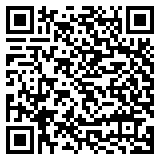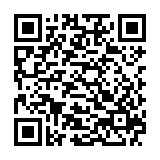Language is a fascinating thing. It’s how we connect, share ideas, and express our thoughts. But the way we speak can vary a lot depending on where we live. A single language can have different meanings, pronunciations, and expressions based on the region or even the neighborhood. When it comes to language interpretation, especially during live events or in real-time situations, interpreters face a tricky challenge—how much of a region’s local dialect should they keep, and how much should they adapt for clarity? Let’s explore how regional dialects impact language interpretation and how interpreters balance staying true to the original while making sure their audience understands.
What Is Language Interpretation?
Before diving into regional dialects, it’s important to understand what interpretation is. Unlike translation, which deals with written text, interpretation is the process of converting spoken language from one language to another. Interpreters work in real-time, often during live events like meetings, conferences, or even courtroom proceedings. Their job is to make sure that the speaker’s message is communicated clearly and accurately to the audience, which can be tricky if there are regional dialects or local expressions involved.
Regional Dialects: What Makes Them Unique?
A regional dialect is a variation of a language that is specific to a particular area or group of people. These dialects can include different words, pronunciations, grammar, and slang that are often tied to a specific region. For example, in the United States, someone from Boston might say “wicked” to describe something really cool or impressive, while someone from California might use the word “awesome” instead. Even within the same country, the way people speak can vary so much that it can sometimes feel like a completely different language.
In addition to word choice, regional dialects often have different accents. Someone from the southern United States may have a distinct drawl when they speak, whereas someone from Scotland might have a thicker accent that makes certain words harder to understand. These differences can add personality and flavor to the language, but for interpreters, they can present a challenge.
Why Do Regional Dialects Matter in Interpretation?
Regional dialects can be an exciting part of language, but when it comes to interpretation, they can also create problems. In many cases, interpreters are working with audiences who may not be familiar with the specific regional dialect being spoken. If the dialect is too strong or uses too many local expressions, it might confuse listeners or make it harder for them to understand the message.
Imagine you’re listening to an interpreter translate a speech from someone speaking in a heavy Scottish accent. If the interpreter doesn’t adapt the language to something the audience understands, the audience might miss the meaning of the speech. On the other hand, if the interpreter over-simplifies or removes too much of the original dialect, the speech might lose its authenticity, and important cultural nuances could be lost.
Striking the Right Balance
For interpreters, the key is finding a balance between maintaining the authenticity of the speaker’s voice and ensuring that the audience understands the message. This is especially true when dealing with strong regional dialects or slang that might not exist in the target language.
Let’s say an interpreter is working with someone from Texas who uses the phrase “fixin’ to” (meaning “about to do something”). In a direct translation, the interpreter might change it to “about to,” since that’s a phrase more widely understood. However, if the term “fixin’ to” is crucial to the context, the interpreter might choose to keep it and briefly explain it afterward. This way, the audience still gets a taste of the original dialect, but they also understand the meaning.
The Role of Culture in Regional Dialects
Language isn’t just about words; it’s about culture, too. Regional dialects often carry cultural meaning. For example, someone from New York City might say “Yo, what’s up?” as a casual greeting, but someone from a rural area in the Midwest might greet you with “Howdy, how are ya?” These phrases are part of the identity of the region, and an interpreter needs to decide how much of that identity is important to convey. If the phrase is culturally significant, the interpreter might keep it, but if it doesn’t add to the meaning of the conversation, they may choose to adapt it.
In some cases, interpreters will use “cultural equivalents” rather than direct translations. This means instead of directly translating a regional expression, the interpreter will choose an expression that serves a similar function in the target language. This helps ensure that the conversation feels natural while still staying true to the spirit of the original message.
When Does Local Go Too Local?
While it’s important to preserve the flavor of regional dialects, there’s a limit to how “local” an interpretation should go. Overusing local phrases and slang can make the interpretation feel disconnected from the audience. For example, imagine a conference with a global audience where one of the speakers uses heavy local dialects that only a few people understand. The interpreter might need to make quick decisions about when to simplify or explain certain phrases. The goal is to make sure the audience grasps the message while still respecting the regional character of the speech.
In some cases, it’s better to avoid certain regional expressions entirely. For instance, if an interpreter is working in a country where a specific regional slang isn’t common or might cause confusion, it’s better to stick to more neutral terms. The interpreter’s primary responsibility is to make sure that the message is clear, even if that means sacrificing some of the local color.
How Interpreters Handle Local Dialects in Practice
Interpreters are skilled professionals who often work in high-pressure situations. In practice, they will use a variety of techniques to handle regional dialects. These techniques might include:
- Clarification: If a regional expression is unclear, an interpreter might ask for clarification or simply choose a more common phrase.
- Simplification: If the dialect is too complicated or specific to a region, interpreters might simplify the message while retaining the original meaning.
- Cultural Context: Interpreters use their understanding of the cultural context to determine how much of the dialect to preserve or adapt. They know what will resonate with the audience and adjust accordingly.
- Footnotes or Add-ons: In some cases, an interpreter might provide extra context or explanations, either in real-time or after the main interpretation, to help the audience understand the dialect.
Why Language Interpretation Matters
Interpreting regional dialects is more than just a technical task—it’s about making sure the essence of the message comes through clearly and respectfully. Whether it’s during a business meeting, an international conference, or a courtroom trial, interpreters play a crucial role in bridging language barriers. Their ability to navigate regional dialects ensures that everyone, no matter where they come from, can understand and connect with what’s being said.
Language interpretation isn’t just about converting words—it’s about capturing meaning, tone, and cultural context. So next time you’re listening to an interpreter, whether in a meeting or at a live event, take a moment to appreciate the delicate balance they strike in making sure regional dialects don’t get lost in translation. It’s not just about the words; it’s about keeping communication authentic and clear for everyone.





0 Comments